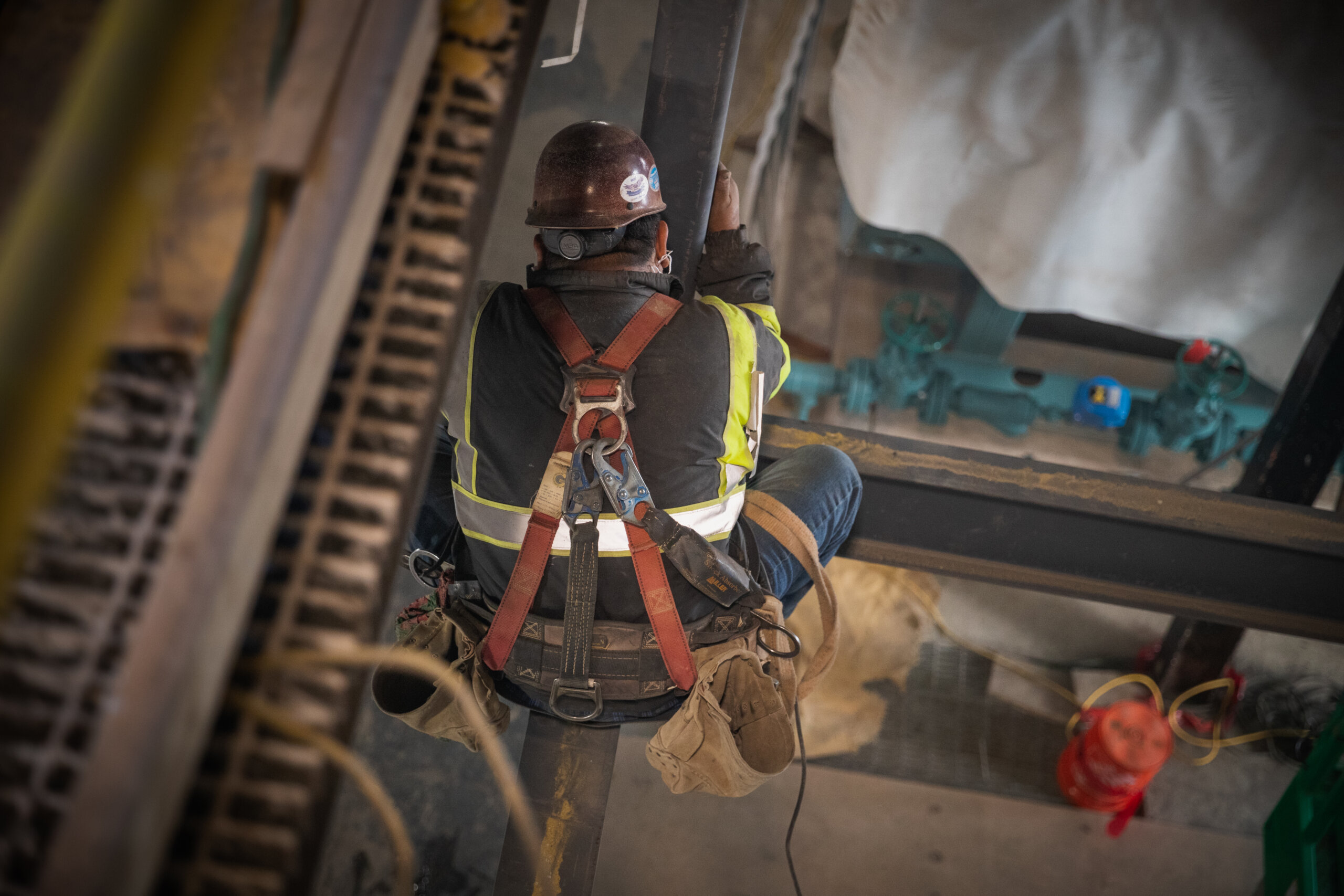You check eggs before putting them in your cart.
You sniff the milk before pouring it in your coffee.
But a harness—the one thing between you and the ground—gets clipped on without a second glance?
In 2022, falls accounted for more than one-third of all construction fatalities—and faulty or poorly maintained fall protection gear is a known contributor. Worse, many of the harnesses involved in those failures had been worn and passed over dozens of times without a proper inspection.
When you’re working at height, your harness is your last line of defense. If it fails, nothing else matters.
In this guide, we’ll walk through the 10 most common harness inspection failures, based on real-world usage, and show you how to spot them before someone gets hurt.
1. Fraying and Abrasions on the Webbing
What to Look For: Worn, fuzzy fibers—especially near D-rings or shoulder straps.
Why It’s Dangerous: Webbing damage weakens the structure of the harness and compromises energy absorption in a fall.
How to Prevent It: Run your hands along the harness webbing during inspection. Feel for rough or worn spots. Teach workers to report wear immediately, not just wait for formal checks. Store harnesses where they won’t rub against sharp edges or rough surfaces.
2. Cuts, Nicks, or Tears in Webbing
Common Cause: Sharp tools, snagged rebar, or improper storage.
Red Flag: Even small cuts can lead to catastrophic failure under tension.
Prevention Tip: Use protective gear in sharp-edge environments (like sheathing sleeves), and always inspect harnesses after a fall or snag incident—even if it looks minor.
3. Burnt, Charred, or Melted Fibers
What It Looks Like: Hardened or discolored webbing, often near high-heat exposure zones.
Why It Happens: Welding sparks, open flame, or even prolonged UV exposure from sunlight.
How to Avoid It: Keep harnesses away from heat-generating tools, and never leave them hanging in the sun all day. Store them in a cool, dry space.
4. Damaged Stitching: Pulled, Cut, or Missing Threads
Why It Matters: The stitching holds key stress points together. If it’s compromised, the harness may come apart under load.
Where It Fails First: Around load-bearing rings and buckles.
How to Catch It: Glove-up and do a close-up manual inspection. Look for loose, uneven, or broken threads. If you’re unsure, retire it.
5. Corroded or Rusted Hardware
What to Look For: Orange rust, pitting, or stiff movement in buckles, D-rings, or adjusters.
Risk Factor: Rust weakens the metal and increases the risk of buckle failure under stress.
Prevention: Wipe down hardware regularly, especially in humid or chemical-heavy environments. Keep harnesses dry and well-ventilated.
6. Twisted, Bent, or Broken Buckles and Grommets
Visible Signs: Deformed metal, loose grommets, or difficulty tightening straps.
Why It’s Dangerous: Buckles that won’t hold tension or break under load = failed fall protection.
Fix: Immediate removal from service. No exceptions.
7. Missing or Illegible Tags
Why Tags Matter: OSHA and ANSI require that harnesses be traceable by date, manufacturer, and serial number.
Real-World Risk: No tag = no way to verify age, inspection history, or compliance.
Best Practice: If the tag is unreadable or missing, the harness is automatically out of service. Period.
8. Overstretched or Warped Webbing
What It Signals: The harness may have already been involved in a fall or overloaded.
Warning Sign: Webbing that feels uneven, thin in spots, or doesn’t flex like it used to.
What to Do: Assume any overstretched harness is unsafe and pull it from circulation. These aren’t elastic bands—they’re engineered to absorb specific loads.
9. User Modifications (Extra Holes, Add-ons, DIY Fixes)
We’ve Seen It: Workers punching extra holes “for better fit,” zip-tying broken adjusters, even duct-taping frayed straps.
Why It’s a No-Go: Modifying a harness violates manufacturer specs and can invalidate compliance.
Solution: Train crews on why not to tamper with safety gear—and give them a fast way to request a replacement.
10. Poor Cleaning and Storage Practices
Often Overlooked: Dirt, chemicals, and UV exposure degrade materials over time.
What You Risk: Mold, mildew, stiffening, or weakened fibers—none of which are obvious at first glance.
How to Fix It: Clean with mild soap and water, dry completely, and hang in a well-ventilated, shaded area. Never toss it in the back of a truck.
Wrap-Up: Stay Ahead of Harness Failures
The best harness is the one you don’t have to think about—because it’s been inspected, maintained, and stored properly every single time.
A harness failure doesn’t start when someone falls. It starts the moment a damaged piece of gear goes unnoticed and gets used again.
So what’s your team doing to stay ahead?
Download the Harness Inspection Checklist
We’ve put together a FREE, printable checklist you can use to train workers, guide inspections, and document compliance—all in one place.
Whether you’re managing five harnesses or fifty, this checklist makes it easy to know exactly what to look for—and what to do when something’s wrong.
